

Homepage > CMRC understandings > 【CMRC understanding】How far is it to realize unmanned driving in the park
Hits:4263 Createtime:2022-08-25 14:42:40
With the rapid development and in-depth application of a new round of information technologies such as 5g, mobile Internet and cloud computing, it has become a general trend to improve the competitiveness of the park with intelligence. According to the calculation of China Research century, the investment in smart park construction in China will exceed 240 billion yuan in 2020. Due to the impact of COVID-19, the growth rate of smart park investment will be slightly narrowed. However, as an important part of smart city construction, the construction of smart park will still have a high growth rate in the future. The introduction of unmanned driving has become an important symbol of the intelligent construction of many parks.
"Not all automatic driving is called unmanned driving!"
At present, most governments and enterprises are adopting the automatic driving classification standard formulated by SAE International; According to SAE, automatic driving is defined as six levels from l0 to L5 (see Table 1), and only when level L4 and level L5 are reached, automatic driving is unmanned. At present, the commercial mass-produced manned auto drive system in the world is mainly L1-L3, and L4 is trying to be commercialized in the bus field.
Table 1: classification of automatic driving level
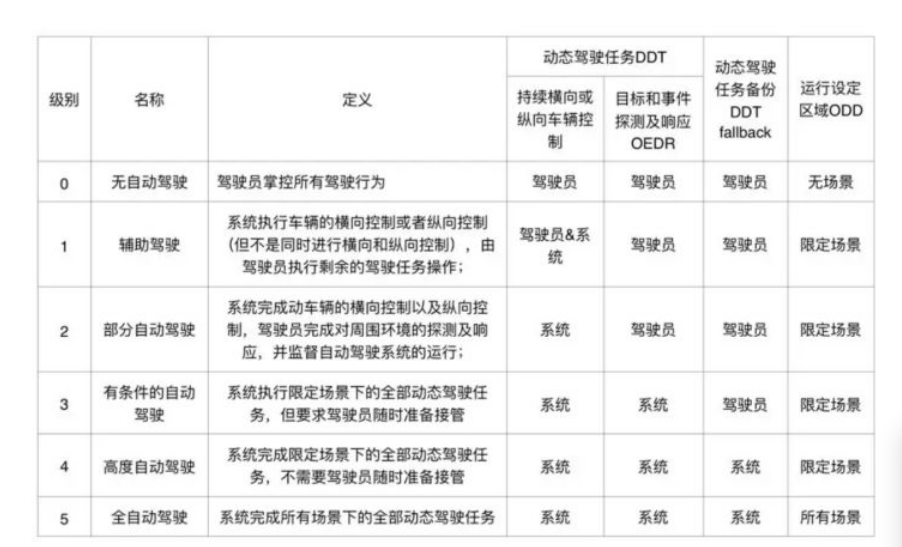
"There are many applicable scenarios for unmanned driving in the industrial park, and multi scenario linkage can be realized!"
Unmanned driving is still in the initial stage, and continuous testing and data accumulation are required. The park scene is relatively closed and the road conditions are simple, which is suitable for the trial operation of various unmanned vehicles and the upgrading of unmanned driving schemes. In the market survey report "application opportunity mining of unmanned driving in semi restricted areas", China Research century explored the applicable scenarios of unmanned vehicles in the area.
Automatic driving in the park can be divided into 8 types: unmanned connection, formation driving, time-sharing leasing, unmanned cleaning, unmanned distribution, unmanned logistics, unmanned sales and unmanned patrol inspection. Most of them are at L4 level. See Table 2 for details
Table 2: types of automatic driving products used in the park
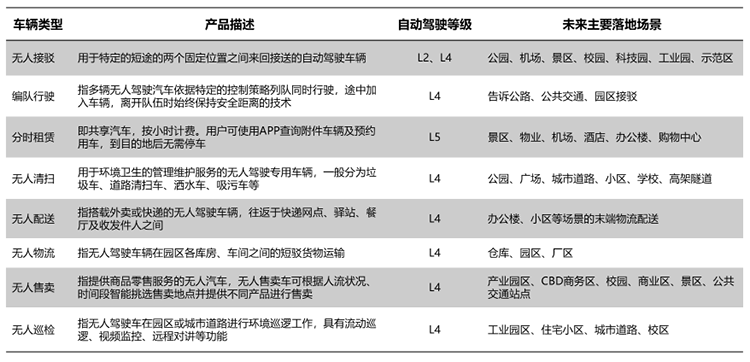
Among the above types of driverless vehicles, the driverless shuttle vehicle solving the "last kilometer of commuting" has attracted the interest of the park managers. In recent years, commuting convenience has become an issue that must be considered in the park's investment promotion. The increasing labor cost has brought a certain opportunity for the introduction of unmanned vehicles.
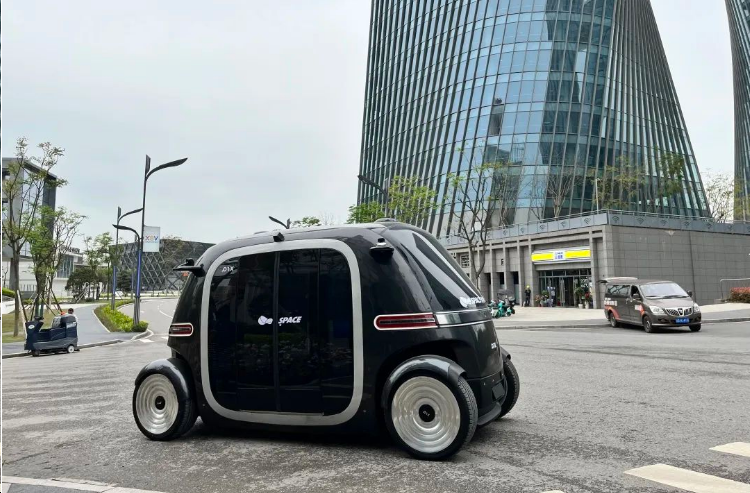
"Are there really any opportunities for unmanned shuttle buses?"
As a professional market research company specializing in empirical research, China Research century has selected different types of parks to understand their commuting needs and pain points. According to the investigation, there are mainly four scenes in the park: commuting, business trip, business trip and in the park. See Table 3 for details
Table 3: scene of the park
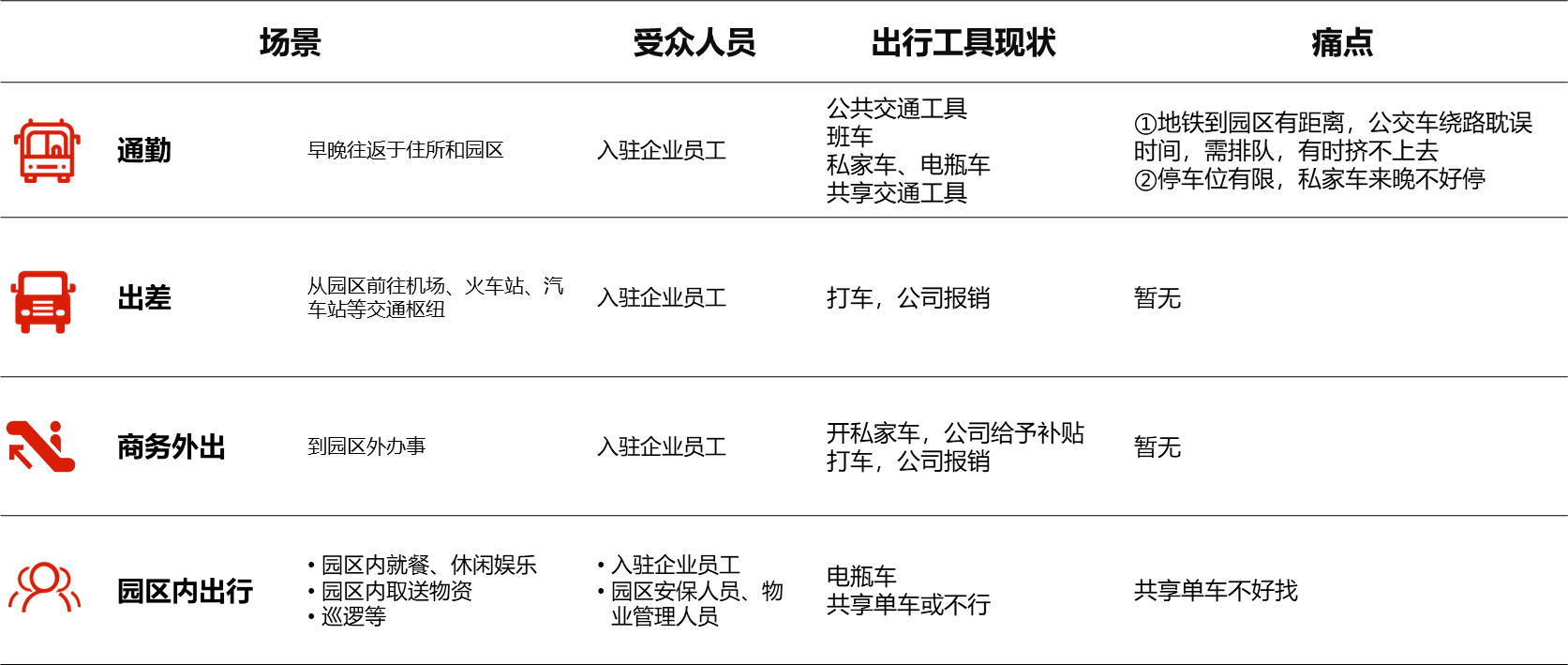
From the analysis of travel scenarios, the applicable scenarios of unmanned shuttle vehicles are mainly the shuttle bus from the subway station around the park to the park, and the shuttle bus from the apartment in the park to the park. At present, it is mainly solved by the shuttle bus configured in the park. See Table 4 for shuttle bus configuration and operation.
Table 4: shuttle bus configuration and operation
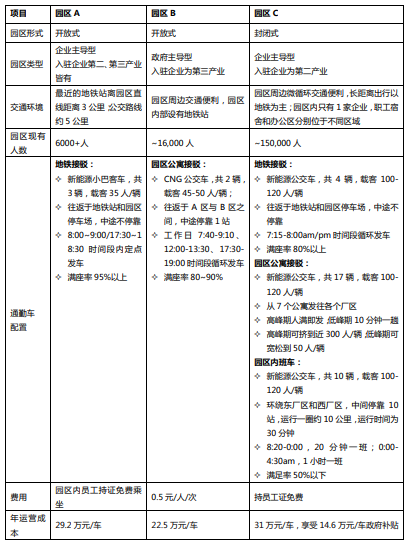
According to the research of China Research century, most open parks adopt the mode of outsourcing commuter connection to a third-party operating company, while most closed parks are manufacturing enterprises, with large demand for shuttle buses, and most adopt the mode of cooperation with public transport groups. The common pain point of commuting is the insufficient supply of vehicles. At present, the labor cost accounts for nearly 40% of the vehicle operation cost, and there is an upward trend. Increasing the vehicle configuration will inevitably increase the number of drivers, and the resulting costs will be higher. In the absence of government subsidies, it is difficult for the park to bear, while very few Parks can enjoy government transport subsidies.
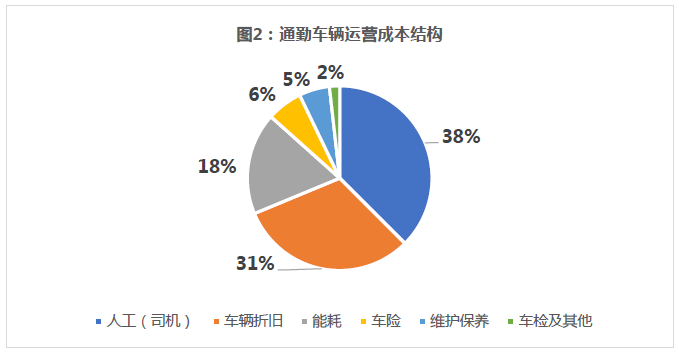
Since 2018, there have been pilot driverless schemes in the park. For example, Tianjin Huaming Industrial Park cooperated with Tianjin Qingzhi Technology Co., Ltd. to test its driverless vehicle. See Table 5 for vehicle information. However, the trial operation results are not ideal, and the problems are mainly as follows: ① the endurance is low; ② The cycle of product commissioning and maintenance is longer than the operation cycle; ③ The steering of the vehicle is not flexible enough and is rather stiff; ④ The right to open the driverless road is required. Since 2019, Great Wall Motors has successively released a number of cutting-edge scientific and technological achievements including L4 level urban auto drive system. The version 3.0 of its "i-pilot smart pilot" corresponds to the L4 level of automatic driving, which basically solves the technical problems of driverless vehicles. However, due to the impact of COVID-19, the commercial production time originally planned for 2023 has to be delayed. In addition, from August 2022, Shenzhen driverless will be legally on the road in Shenzhen, which indicates that the problem of driverless Road Authority will be gradually solved.
Table 5: shuttle bus configuration and operation

"What type of park will unmanned drive first?"
During the investigation, China Research century found that there is a large demand for shuttle buses in the secondary industry industrial park, especially in the closed Park settled by single enterprises. The shuttle buses and apartment shuttle buses in the park are relatively easy to be replaced by driverless ones, but there are also several resistance points:
① Some parks have government transport subsidies. Can you continue to get subsidies after using unmanned driving? Or can the cost of adopting unmanned driving be the same as the cost after the current subsidy?
② With a large number of employees and uneven quality, can the driverless vehicles operate smoothly and safely?
③ The turnover rate of employees in the park is large, and the number of vehicles fluctuates greatly, which needs to be adjusted from time to time
Whether it is an enterprise led open park or a government led open park, like closed parks, they all have the demand for commuting from the subway to the park, but it is not easy to realize in the short term. The first resistance comes from policies and regulations: the legality of driverless vehicles on the road cannot be implemented in a large area in the short term. The second resistance comes from the cooperation mode: most parks currently outsource commuting to third-party operating companies, These companies are unable to bear the high initial investment cost and have low interest in unmanned driving.
"How far is unmanned driving?"
Driven by the demand to reduce labor costs and the relatively simple application scenarios, unmanned driving will be preferentially implemented in special work scenarios such as port transportation and mines, while Park connection, sanitation cleaning and low-speed logistics will also have greater application opportunities. However, it faces challenges in technology, standards and regulations, and infrastructure configuration. At the same time, it also faces challenges in business model and social acceptance. It is indeed difficult to implement it on a large scale in the short term. However, the popularization of high-level automatic driving technology will greatly improve traffic safety, improve traffic efficiency, and reduce energy consumption and emissions. We need to have confidence and patience in it.